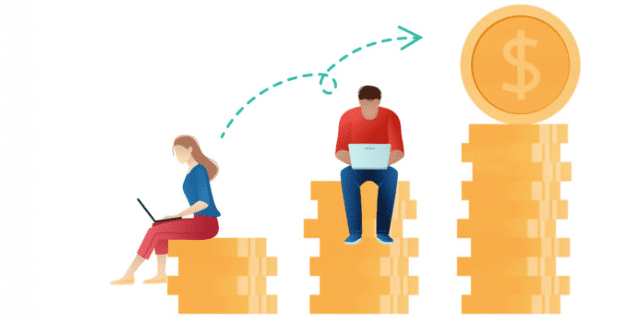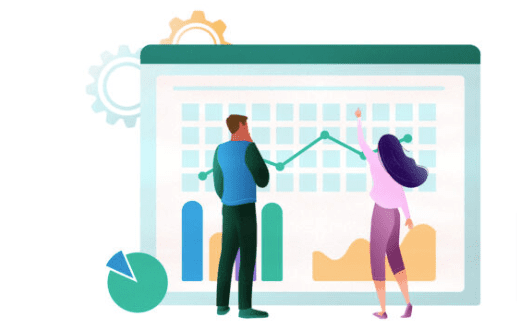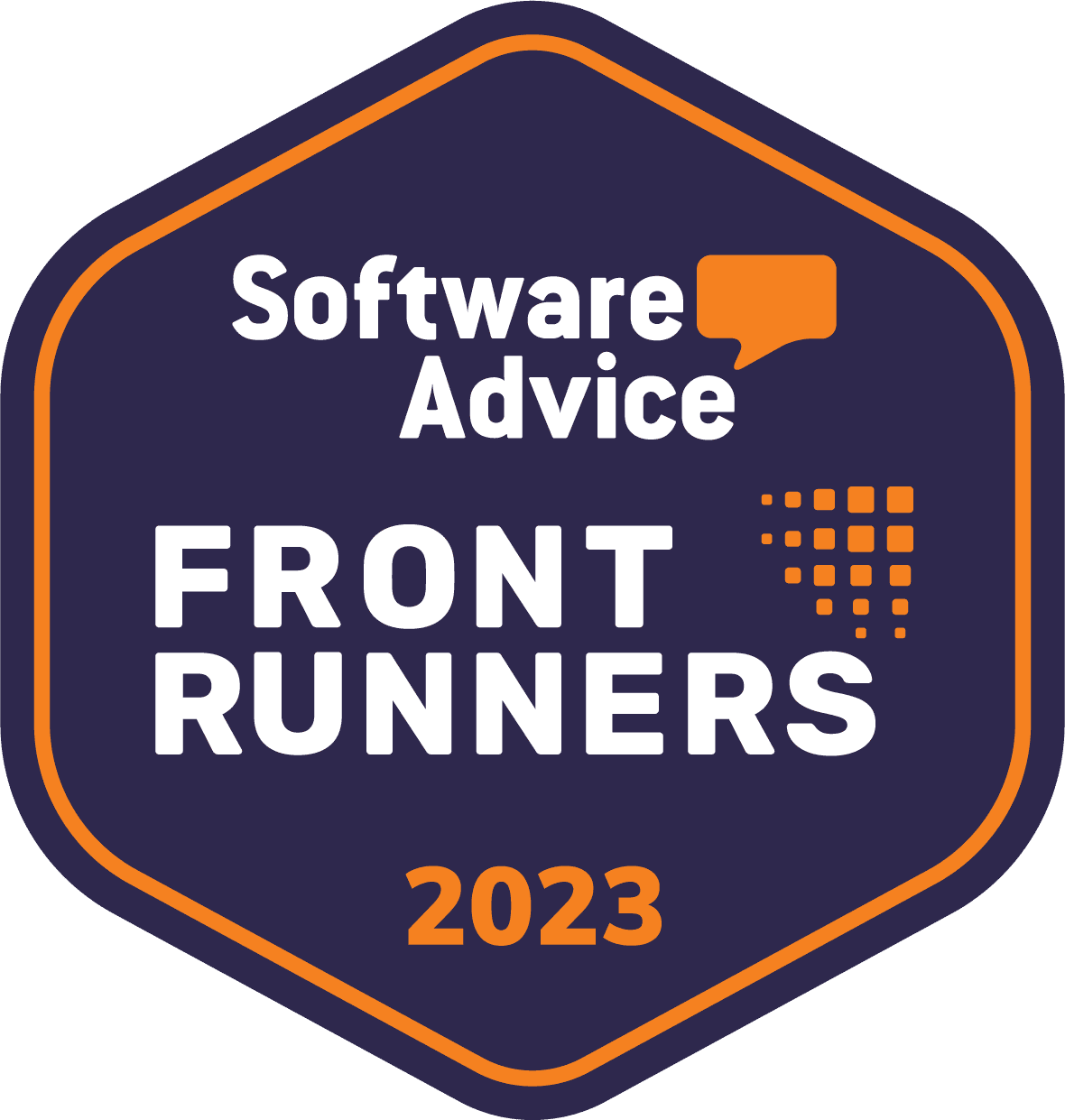 4.7
|
80+ REVIEWS
4.7
|
80+ REVIEWS
HR Reporting
& Analytics Software
6,500+ organizations trust Netchex
Real Time Insights
Accurate, up-to-the-minute data accessible in one place.
Report Builder
Import, export, share. Point, click, and uncover impactful insights.
Highly Customizable
Creating custom labels, categories, and views has never been more simple.

It’s All In The Details
When you need specifics, Netchex helps you find exactly what you need. Drill down to the nitty gritty with comprehensive reporting and granular views at every level of an organization.
Organized Data Pulls

See Things Your Way
Make everything your own. Customize and save data pulls to automatically generate information in the format you need for scheduled reporting with Netchex.
Ad Hoc Features

Point. Click. Publish.
Share your insights. Presenting and distributing analytics is a cinch with NetPublish filters, report-builders, pre-set options, and export features.
Simple Output

Real Time & On-Demand
Analytics and reporting that keeps pace with your business. Netchex’s up-to-the-minute data helps you make better business decisions.
Connected Reporting
Featured Case study

Leake and Andersson
As a Netchex client for over 10 years, our system provides Leake & Andersson with the reporting tools and capabilities it needs to successfully run payroll for their small business. Today’s workforce can be remote, seasonal, part-time or salaried, and Netchex is equipped to handle these variations with unlimited direct deposit, live e-checks, or paycards. Our automated taxes and reporting capabilities are indispensable when it comes to compliance, takings tasks off your plate and worries off your mind.

Embrace the future of HR technology & elevate your customer experience with Netchex.
HR Reporting and Analytics: What Do They Mean for HR?
When it comes to HR reporting and analytics, the overwhelming benefits justify a considerable investment of resources. HR analytics can give your business an edge against competitors who are too slow to adapt and innovate.
Only 77%
of executives now rate people analytics as a key priority
Source: Deloitte
However, for HR data to be useful, it must be:
- Accurate and up-to-date
- Provide useful insights for your business
- Provide in-depth analysis of broader trends
The process of HR analytics can be broken down into three main components: data, analysis, and reporting.
Data (Metrics)
HR software makes it easier to collect and process data automatically, from absenteeism to the relative popularity of different employee benefits. You’ll need to start by identifying useful data points, or metrics. The data needs to be quantifiable because numbers are better to compare on a large scale and over time.
Accordingly, qualitative variables like employee satisfaction are easier to analyze with quantitative data points like numerical surveys and Key Performance Indicators (KPI’s). KPI’s should reflect priority issues for your company and industry, such as revenue and productivity.
Analysis (Analytics)
Collecting numbers is only the beginning. You’ll also need to compare recent and long term data for context. Was the company this short-staffed last month? Are seasonal patterns (like holiday vacations) skewing short term data?
Some KPI’s need to be calculated from multiple data points, like “time to hire” and “offer acceptance rate.” Analysis provides context for a fuller picture of circumstances and the overall health of your business.
Reporting (Results)
Reports are essentially the starting point as well as the end product of HR analytics. Your raw data (metrics) may be collected from a variety of automatic reports.
Processing and analyzing that data highlights meaningful trends and answers questions about whether current policies need changes. Reporting highlights the key findings of data analysis, making it easy to see and understand results, as well provide updates to others.
Only 34%
of organizations use predictive analytics and 43% make at least moderate use of prescriptive analytics.
source: HR.com

Understanding HR data and reporting
To better understand the numerous uses and benefits of HR data and reporting, ask yourself the following seven questions.
How will HR data & analytics help the overall business?
Most HR professionals already understand how data and reporting can improve HR processes, but what practical business results are also possible with HR analytics?
Make sure HR priorities align with company goals, not just focused on expanding and improving HR. Show how better employee support can lead to retention and reduced expenses. Focus on the future and long term goals, not just the immediate labor saving impact of a software upgrade.
Only 78%
of HR professionals see people metrics as central to the future of HR, but many have significant skills gaps in this area.
source: Macmillan Davies

What exact problem(s) are you trying to solve?
HR reporting and analytics can solve a lot of problems, but it’s important to define the problems you’re trying to solve before getting started. Identify key problems and make sure that you provide supporting data.
Decide on relevant metrics to quantify the problem and make a plan for how to improve those numbers. Set a timeline and specific goals. After changing an HR or management policy, how and when can you judge the results?
Do you have access to enough reliable HR data for reporting and analytics?
You need a large volume of quality data for analysis. Some company resources provide too much data, like raw spreadsheets with data that’s too granular. Other resources provide incomplete or inaccurate numbers.
Metrics like employee hours and survey results need to be consistently formatted and quantitative. Data from last year (or even last quarter) may provide useful comparisons to today’s numbers, but you need fresh, reliable data to assess the current health of the company.
Only 36%
of HR professionals think that their people analytics platform delivers actionable insights.
source: HR.com

Have you considered and addressed the legal and security risks?
Employee data from payroll to healthcare benefits include some seriously personal information. You need to handle employee information appropriately, and there are legal requirements in addition to the ethical concerns.
Make sure you’re staying in compliance and respecting the privacy of employees and clients. Use HR software with reliable security features to avoid running afoul of HIPAA and other regulatory standards.
Read more about Safe and Secure: How to Find a Trustworthy HR & Payroll Company
Have you properly managed your expectations (and those of your boss)?
Making the case for a HR software upgrade might involve salesmanship, but don’t set unrealistic expectations. Try not to overcommit to specific results or immediate improvement.
Analytics and reports provide insights that may not always recommend a specific solution.
Download CFO + HR Toolkit – Discover how the HR-CFO relationship can make an immediate impact in your company.
Rather, detailed reporting allows you to evaluate the effects of new policies and other circumstantial factors. By all means, you should be able to justify the cost of upgrading to better HR software, but don’t shy away from the fact that results may require a period of trial and error.
Have you invested in the right HR technology solutions?
At their most basic level, HR data and reporting analyze and process the information that you should be already collecting. Some systems are less helpful in the way they compile reports. Ideally, you should have a complimentary suite of HR solutions that communicate with each other for a more complete picture.
5X
HR professionals who use HR software are 5X Less Likely to have trouble collecting data.
source: HR.com

When you have all the right HR data collected, you might be tempted to handle your own reporting and analytics in-house. Even with properly qualified staff, processing and reporting can be tedious and repetitive. Human errors can delay and compromise results. For many companies that pursue HR data and reporting, dedicated HR software is necessary.
Are you ready to put HR data insights into action?
Properly deployed, HR data analytics give a much more detailed view of inefficiencies and problems at your company. Are you ready to convert those insights into actionable proposals for positive change?
Policy changes and adjustments are where you see return On investment (ROI) for the hours and funds you’re putting into improved software. Set quantifiable goals and prepare to adjust your strategy for improving results. The final step of improving your company is arguably the most important part of reporting and analytics, and yet it’s largely a matter of your own team’s ingenuity.
While 71%
of companies see people analytics as a high priority, only 22% are currently applying analytics in HR.
source: Deloitte

Unleash the full potential of your business with Netchex's top-tier technology and unmatched customer service.
Collecting HR Data for Analysis & Reporting
In reality, you can and should collect data from every HR process your company runs. The easiest way to collect data for HR analytics is to make sure you are using single-source HR software. Each stage of the employee lifecycle (and ongoing productivity) can be managed and measured through this one, interconnected HR software.
Recruiting
How long does it take you to fill a posted opening? How long does the application process take for new hires? Learn more about how Recruiting Software Changed the Hiring Process
Onboarding
How many new hires complete 100% of the training process? Could you save with virtual onboarding? How many new hires stay longer than 1 year? Learn more about Common Onboarding Mistakes and How to Avoid Them Using HR Software
Performance Management
Exactly how much does performance vary between individual employees? Are remote workers as efficient as on-site staff? Discover the Benefits of Performance Management Software
Learning Management
How many employees completed required training on schedule? Quiz workers before and after training sessions to check effectiveness. Cross train employees and close skill gaps. Discover more about Seven Reasons Why You Need a Learning Management System
Benefits Administration
Which benefits are most (and least) popular with employees? How many employees missed the deadline for open enrollment? Could emerging benefits or perks improve retention? Discover more about What is Benefits Administration and How Can HR Technology Make it Easier?
Employee Engagement
What is the general feeling amongst employees on any number of topics? Is employee morale and engagement trending high or low? Read more about HR analytics, HR data, and HR Reporting
How can you use HR KPIs to reach
department and company goals?
Data might often seem self-explanatory, but you’ll want to have specific objectives to make the best possible use of HR analytics. Establish clear goals so that you know which KPI’s to prioritize.
Retention
Replacing employees is expensive. Assess the main causes of turnover. Reduce the total cost of recruiting and training new hires by keeping experienced workers happy. DISCOVER: Stay Interviews: Retention Benefits, Tips, and Questions to Ask
Employee Engagement
How many employees demonstrate interest in additional training and career advancement? Track and compare individual productivity across departments. DISCOVER: Stay Interviews: Retention Benefits, Tips, and Questions to Ask
Company Culture
How do employees really feel about the company and the work done? How many employees participate in workplace giving and other community initiatives?
What are the Most Important Metrics for Human Resource Management?
The most popular HR initiatives leveraging HR analytics
Employee Engagement
Culture & Diversity
Productivity & Performance
Compensation & Benefits
Talent Acquisition
Workforce Planning
Retention
Compensation
For most businesses, employee compensation is one of the biggest variable expenses and most important HR metrics to track.
- Total Compensation includes benefits, salaries, and bonuses.
- Salary Averages allow you to look beyond the extremes of entry-level wages and upper management salaries.
- Pay Equity judges the relative compensation of employees in similar roles, particularly where implicit biases may lead to one employee being relatively underpaid.
Learn more about Everything You Ever Wanted to Know About Payroll
Total Labor Cost
Total labor cost is the aggregate cost of the hours worked by all employees, plus all related payroll taxes and benefits costs. Total labor cost is an HR metric needed for budgeting of a business.
- Total Cost Of Workforce (TCOW) includes employee compensation (pay and benefits), plus related expenses like facilities and overhead.
- Headcount is the total number of workers in different categories. Contractors, exempt employees, and part-time workers are counted separately from full-time workers.
Read more about 10 Ways HR Technology Helps Manage Labor Cost More Effectively
Time & Attendance
Employee hours have a major impact on payroll and productivity. Timekeeping software provides up-to-the-minute recordkeeping automatically. Track all workers and different types of work with a single, streamlined solution with Time and Attendance software that works directly with payroll.
- Effectively manage Tardiness and Absenteeism. Late arrivals and unscheduled absences can be disruptive.
- Overtime Hours, usually anything beyond 40 hr/wk quickly. Excessive overtime leads to employee burnout and suggests a need for additional staff.
- Leave Management is a system for scheduling employees and keeping the company running efficiently throughout various absences and scheduling issues.
Discover more about The Benefits of Time and Attendance Software
Turnover & Retention
Beyond the hassle of recruiting and interviewing new workers, it’s important to track the HR metrics association with losing and replacing employees. When HR wants to invest in company culture and morale, it helps to remind the C-suite about the potential savings in turnover cost.
- Turnover Cost includes the lost revenue because of vacancies, cost per hire, and training pay.
- Internal Promotion Rate shows how often you’re making use of existing talent and rewarding loyal workers. If current employees are underqualified, then a Learning Management System can prepare your staff for future openings.
Recruiting
Some level of turnover is inevitable. The recruiting, selection, and onboarding process should be efficient and cost-effective—and can be with the right recruiting software and HR metrics.
- Track Cost Per Hire to see whether you’re overspending on job boards and advertising.
- An extended Time To Hire can lead to understaffing and unnecessary lost revenue. If you’re slow to respond to job applicants, then the most qualified workers may accept jobs elsewhere.
- Your Hire Success Rate tracks how many new hires become successful employees. What percentage complete the onboarding process and how many reach their first employment anniversary?
Diversity, Equity, and Inclusion (DEI)
A wider range of perspectives can help your business avoid blind spots. Promote diversity with a Learning Management System that closes skill gaps and offers training to everyone.
- Track Diversity Ratios to make sure you’re recruiting and promoting workers from different races, genders, ages, and other demographics.
- Equity is about granting equal access and fairness to everyone, overcoming systemic and unconscious biases.
- Inclusion goes beyond the mere presence of a diverse workforce, making sure that your company culture is welcoming to everyone.
Employee Engagement & Satisfaction
When identifying problems in your company culture, you don’t want to wait for complaints. Get proactive with employee sursveys and quantifiable HR metrics for employee engagement.
- What is your Employee Participation for social events and voluntary training programs?
- Do you have a Workplace Giving Program that reflects the values and priorities of your employees?
- Track the number of Complaints and Incident Reports from month to month, identifying trends and setting goals for improvement.
- Employee Self-Evaluations are used to rate their own experience and satisfaction as part of a routine review process, as well as track changes over time.
Employee Benefits
Benefits Administration Software makes it easy to improve efficiency and provide better value for workers. Employees need options for the benefits they prefer, and your company needs accuracy, efficiency, and compliance across the board.
- What is the Total Benefits Cost for your current benefits program and vendors?
- Track your Cost Per Employee for benefits to see when it’s time to shop around for alternatives.
- Usage Rates will confirm what percentage of employees take advantage of different benefits. Consider adding new and emerging perks like student loan reimbursement to improve recruiting and retention. Are new perks more popular than your older benefits?
Employee Performance
It’s not enough to simply keep moving the goalposts for workers. Establish a performance-based workplace culture by investing as a long term goal for optimization through HR technology.
- Use HR software to track Employee Productivity in terms of both quality and quantity. Increasing the output and number of employee hours may lead to unintended consequences like preventable mistakes and complaints from customers.
- Discover Training or Process Deficiencies and other areas of improvement by department or company-wide.
Learning & Development
How do you keep your best workers engaged and better prepare others to succeed in their careers?
- Standardize L&D Process and Scoring to easier address performance issues and measure improvements over time.
- Provide ongoing Professional Development, closing skill gaps and opening new career paths. Make it a part of performance reviews by evaluating trainees before and after programs.
- Cross Train Employees to improve teamwork, employee skill sets, agility, and resilience.
How HR Software Makes Reporting & Analytics Easier
What’s so important about HR analytics and HR reporting? Like everything HR-related, it’s all about people. The most important ingredient in your company’s success is the people who work there, and analytics can help you empower workers while improving overall efficiency.
74%
of companies plan on increasing spending on HR technology, particularly for greater HR analytics capabilities
source: Oracle

How HR reporting and analytics improves HR Management
Analytics provide clarity by processing numbers in context. A dozen different problems might contribute to decreased productivity, but you can’t respond appropriately if you don’t know the root causes. Here are just some of the HR process improvements possible with accurate HR analytics:
Make better business decisions
Too many management decisions are reactionary instead of forward-thinking. With analytics, you can optimize performance and workplace culture without waiting for a huge crisis or pattern of incidents.
HR analytics allow you to track the incremental impact of interventions and other variables on tardiness and other perennial issues. Use predictive and prescriptive analytics to project the most likely outcomes of different policy changes.
Develop a data-driven approach to HR
There are two dominant approaches to human resources work:
- Operational HR focuses on the practicalities of daily HR tasks, from onboarding new employees to benefits administration.
- Strategic HR has become popular in recent decades for its future-oriented approach to improving policies.
With the help of a full suite of HR technology, today’s data-driven HR provides a clearer direction for decision-making. With data-driven human resources, your team can also get a more detailed picture of trends at your company. Up-to-the-minute data management software handles daily operational tasks and facilitates long term planning.
61%
year-over-year increase in the number of people HR analytics listed as a skill on their LinkedIn profiles
source: LinkedIn

Align HR goals with overall business goals
The HR team isn’t quite like other departments, which can make the HR role feel detached from the primary purpose of the company. HR already collects a lot of useful data in daily operations, but it’s hard to crunch all the right numbers without HR analytics and proper HR reporting. With the right software and HR reporting, you can stay focused on the overall big picture.
Proper HR reporting allows you to make your case (and judge success) with changes in productivity, engagement, and turnover. Analytics give you a more detailed understanding of the relative cost and benefits of different policies.
Improve various HR processes
Analytics provides useful insights for standard HR processes. Software for HR analytics allows you to collect relevant data automatically, making it easy to test and compare different solutions, while customizable HR reporting
Assess your current recruiting program by comparing the time to fill a position and the relative quality of applications from different job boards.
- How long does it take for a new applicant to be interviewed
- How long does the onboarding process usually take?
49%
of HR professionals find data integration fairly or very difficult
source: HR.com

Experience the Netchex advantage: advanced technology & unrivaled customer support.
How HR software simplifies HR reporting & analytics
HR technology does more than simplify HR management. It makes the whole process of analysis and reporting more efficient and accurate.
Accurate and up-to-date data
Without technology integration, data entry is a slow process that creates needless opportunities for human error. Use HR software to get more reliable results without the need to manually transfer data.
Quicker and easier data pulls
Without automation, you may need hours or days to process data, meaning that the results are already growing stale by the time HR reporting is ready. HR software makes it easy to pull an updated report without starting from scratch.
Better segmentation and customization
Make HR reporting work better for you. Divide up your data with categories that make sense for your business. Insert custom labels and separate benefits data from payroll and other segments. Save custom formats to easily reproduce the same style of report.
Safe and secure
HR data security is essential for protecting employee and company data. Unsecured email attachments and spreadsheets are slow and vulnerable. When it comes to HR reporting, don’t play fast and loose with important or private data.
Simple sharing and distribution
Automatic reports can be exported into common formats like PDF and Excel. Graphics and dropdown menus allow for added convenience and clarity. Send HR reports directly to stakeholder emails or easily print hard copies.
Improving HR Reporting through Data Integration and Accessibility
When it comes to HR software, data integration is an essential measure of software compatibility. This is why integrated technology solutions are so important—and why true single source technology is really the only way to go.
As your investment in HR technology grows, it quickly makes much more sense to invest in a single provider. At Netchex, when we say single-source technology, we actually mean it. Our system has always been developed and maintained in-house, as opposed to acquiring other platforms to supplement our offering. Everything is interconnected, accurate, up-to-date, and most importantly, accessible via just one login. Altogether, this means:
Discover why data integration is so important and how single-source technology is the only way to truly streamline and integrate all of your HR data.
Harmonious data flows
Robust Reporting
Complete compliance
Better employee experience
Greater accessibility
When you buy software from multiple providers, some are more accessible than others. Data must be transferred for each reporting cycle, which means unnecessary work and potential errors.
Improve productivity
& efficiency
Data integration eliminates hours of tedious repetition and frees up your workers to focus on more important tasks.
Identify bad data
Typos, formatting errors, and compatibility problems are frequent roadblocks when integrating data from multiple systems and trickles down to yield misleading results. Unreliable reports can lead to counterproductive decisions and policies.
Safer & more secure
With other providers, tech support may be lacking, and even the latest versions may have security issues. You have a legal and moral obligation to protect sensitive employee information and investing in a single-source HR solution reduces your exposure.
Identify trends
Integrated data collection empowers your staff to catch problems earlier and cross reference different sets of information. It’s easier to find smart solutions when you see multiple sides of the problem.
Greater analysis & reporting
Your company’s data is complex and interconnected, even if you don’t have a very large workforce. The right software makes HR analysis and reporting easier and faster. Instead of tracking down errors in manually processed data, HR can look forward to proactive solutions.
Improving employee
experience with data
Without HR data integration, new hires must repeatedly provide the same information on different forms and programs. Stored in different formats with different software, siloed data is less accessible to HR staff and management.
Tips for Reporting HR Data
The HR department must have a good relationship with all company departments, as well as upper management.
What kind of data is most relevant for your audience (executives, managers, production, etc.)? Don’t make the mistake of reporting trivial or unreliable data.
Helpful HR reporting relies on factual data to draw accurate conclusions and make informed decisions about managing employees and a company. With the right data, HR technology can be used to improve nearly every aspect of the employee experience— including onboarding, learning and development, and employee engagement.
Preserve and strengthen your department’s connection throughout the company by ensuring your data meets these standards:
Business-critical
Don’t forget how HR initiatives and metrics impact the company’s bottom line. Routine reports should clarify whether recent changes in data reflect more critical long term trends.
Data-forward
Provide numbers before explaining your interpretation of the data. Someone who doesn’t like your conclusion may be noticeably skeptical (or even hostile) toward the data you provide to explain your opening assertions.
Up to date and accurate
Your information should stand up to detailed scrutiny, but you can’t spend weeks double checking numbers. HR software for Reporting and Analytics makes it easier to add, subtract, and multiply data without multiplying the human errors.
Properly aligned
Use the same formatting, terminology, and scheduling throughout your organization. Does a quarterly, monthly, or academic calendar make sense for reporting? If employees use certain terms for productivity, products, and accounts, then internal HR reports should as well.
Easily accessible
Reporting software should help you share results in a variety of ways, most likely email. HR metrics and initiatives should never seem inaccessible or obscure to other leaders at the company.
Easily digestible
HR reports should be easy to read and largely self-explanatory. Charts and graphs should show the most important metrics without excessive detail. The goal of reporting is not to provide all available information, but an accurate representation.
10X
More Likely to be very effective at providing insights to top leaders
source: HR.com

HR professionals who use HR software are
Transform your HR operations with Netchex's innovative technology & unparalleled customer service.
Promoting Data Security Throughout Your Company
HR data security is not just a matter of protecting your company from liability and bad publicity. It’s about doing right by your employees, protecting their personal information from potential misuse.
What kind of HR data is sensitive?
Bad actors with access to employee information can do a lot of damage with just a few pieces of information, most notably identity theft. Here is some of the employee information that employers must keep protected:
- Payroll information, such as bank account numbers
- Basic employee information, including Social Security and driver’s license numbers
- Employee benefits and healthcare information
- Employee medical issues, including FMLA
- Compensation data, such as salaries, raises, bonuses, etc.
- Performance review and termination records
- Workplace complaints and disciplinary actions
- Drug and alcohol testing
- Workers’ compensation
- Confidential company planning, like layoffs, expansion, and restructuring
How can you protect sensitive HR data?
Protecting your company’s sensitive information must be a top-of-mind concern. HR must have a plan, great communication, proper training, and HR software that guarantees HR data security and remains up-to-date with current cyber threats.
Partner with IT, Legal, and Security teams
Unsurprisingly, this is an area where you’ll need help from experts.
- Start by talking with your IT staff about network security and basic protections like firewalls.
- Talk to the legal team or obtain outside legal advice about your company’s legal obligations, compliance concerns, and overall liability issues.
Enable appropriate permissions
Managers and some supervisors will need broader access and permissions on company software than everyday employees. Rather than granting everyone unnecessarily broad access, make sure you’re only granting permissions where needed.
Set appropriate expectations
Work with your IT department to develop clear rules for employees. Be sure to include this information when updating your employee handbook.
Require strong passwords
Your employees will need to create complex and secure passwords. You should require capital and lowercase letters, numbers, and symbols. Your system can also require employees to regularly create a new, unique password, including monthly or quarterly. And no password sharing—no exceptions!
Utilize multi-factor authentication
Mobile notifications and biometrics can seem extraneous, but they make a big difference with network security. Periodically have your employees use an authenticator app or at least a text message confirmation to confirm their identities, especially when employees work remotely.
Encrypt sensitive information
Encryption is essential for protecting your company’s data, like when it’s being transferred through external servers and email. Help employees feel safe and secure by utilizing encryption throughout the workplace.
Proper data destruction
Develop protocols for shredding sensitive documents and other materials. Digital records also need to be properly destroyed by your IT department. Make sure those policies are included in your employee handbook.
Conduct regular security audits
Conducting an audit of your HR policies, procedures, and security is just as valuable as financial audits. An HR security audit can help you assess the security of your company, such as improved insights, potential oversight, and up-to-date information on threats.
Routine data security training
Employees need to be trained on password rules and data security policies. With dedicated training, employees should have better instincts for avoiding phishing emails and future scams.
Proper employee offboarding
Offboarding is just as important as onboarding. Similar to how you grant new hires access to company software, you need a schedule for blocking that access for departing employees.
Make sure you’ve collected company hardware, physical keys, and ID badges that could give a non-employee access to your building or network. Add these steps to your employee offboarding checklist.
41%
of companies attribute the success of their HR software to a close relationship between IT and HR
source: Gartner

HR Reporting & Analytics FAQ
The HR reporting and analytics process can be broken down into three main components: data (metrics), analytics (analysis), and reporting (results).
– Metrics are useful data points that are compared on a large scale. Key Performance Indicators (KPI’s) reflect priority issues for your industry, like revenue and productivity.
– Analysis provides context for a fuller picture of circumstances and the overall health of the business.
– Reporting is the way HR data and analytics are compiled, customized, cataloged, and presented for review.
For every reason you might have to collect and analyze HR metrics, there should be a report to view and compare the results. In turn, HR reporting is used to communicate critical information to employees, management, executives, and within the HR department.
– Creating, tracking, and improving all HR processes
– Planning and follow-through for all HR communication
– Problem monitoring and disciplinary action
– Forecasting and budgeting
With so many metrics to analyze and compare, HR professionals can pull a report on practically anything tracked through HR software. Here are some of the most common and valuable HR reports from an administrative perspective:
– Employee performance report
– Company performance report
– Labor Cost report
– Employee benefits participation
– Turnover report
– Time to hire report
– ACA report
– HR Survey/initiative participation report
Analytics and reporting are essential for the modern workplace. Manual processes are no longer sufficient. They require extra work to manage and are susceptible to errors. With HR software, data is instantly and seamlessly shared with other HR solutions, such as payroll, benefits administration, and performance management, to provide a more comprehensive view throughout the organization for all your HR needs.
When sharing HR reports with executives, or company-wide, it is important to include relevant, up-to-date information. Routine data collection should confirm that key systems are running smoothly, but you can also lay the groundwork (and track results) for HR initiatives.
When reporting to executives, HR data should be:
– Business-critical
– Data-forward
– Up to date and accurate
– Properly aligned
– Easily accessible
– Easily digestible
Compared to manual reporting or pulling reports from disconnected systems, a HR analytics and reporting software will save you significant time and effort. Specific time is dependent on company size, features, and other factors.
Regardless of how much time is saved, HR reporting software enables your HR professionals to focus more of their time and attention to your company’s most important resources—your employees.
Yes, but not all HR technologies are created equal. In fact, Netchex was recently named the easiest Payroll Software Solution by SoftwareAdvice.
At Netchex, we pride ourselves on our system’s ease-of-use and overall user experience. Users praise Netchex for how easy the navigation and self-training features/resources are, in addition to highlighting how overall user-friendly the software is.
Cost depends on a number of different factors. Typically, this includes the number of employees, your company’s specific needs and other similar factors.
HR analytics can value-add to the business strategy by providing data-driven insights and predictions about workforce trends, employee performance, and talent acquisition.

